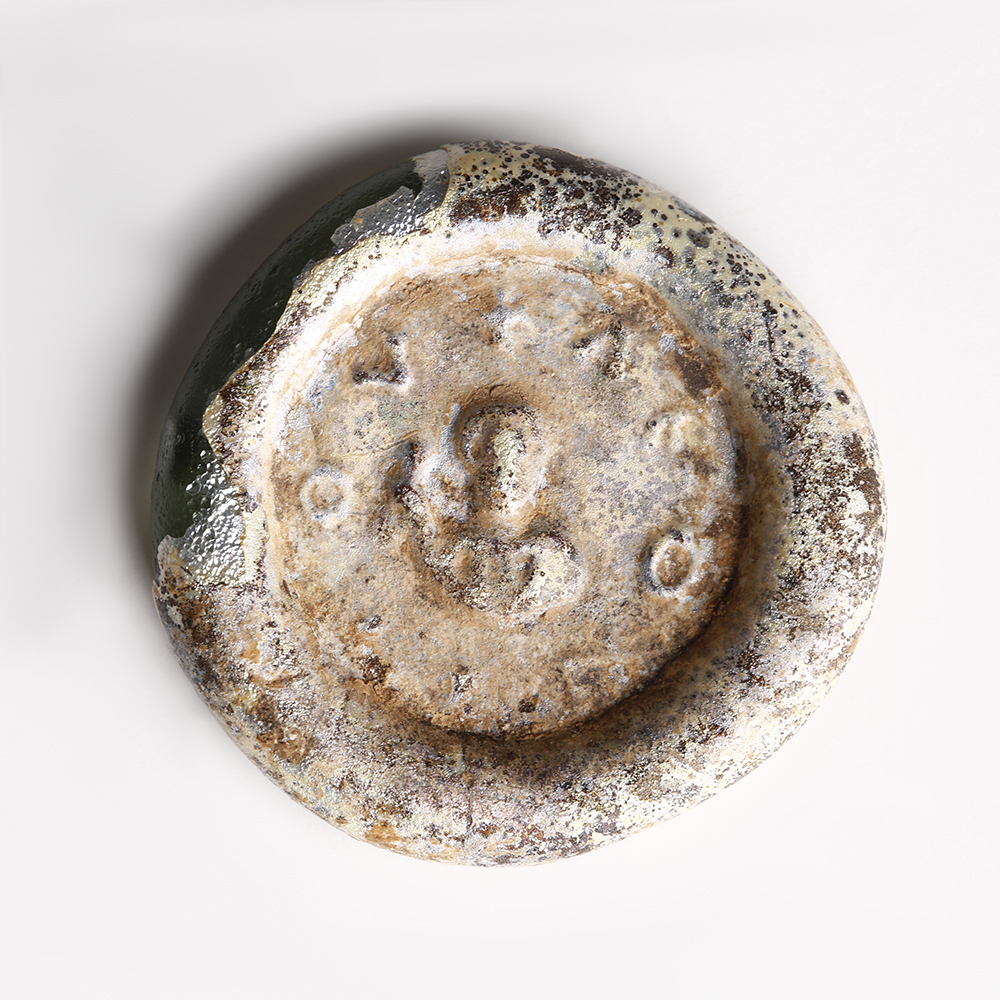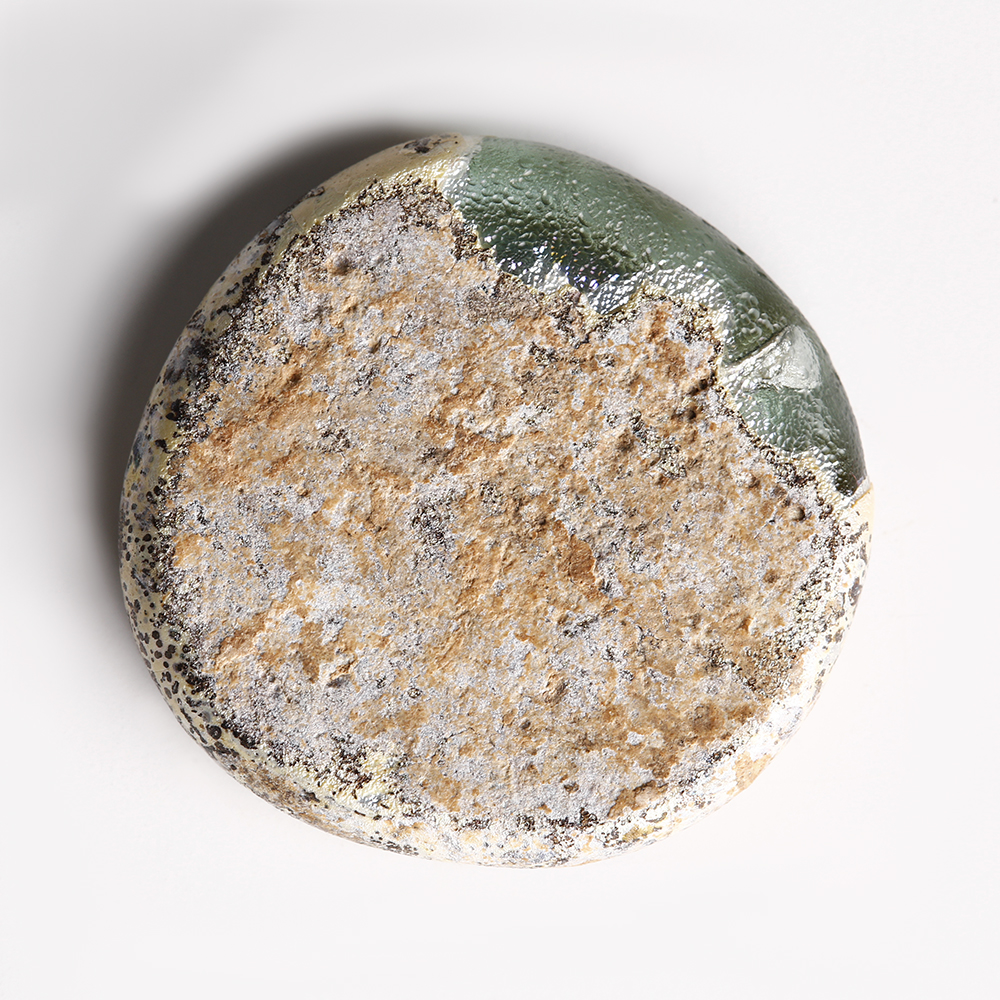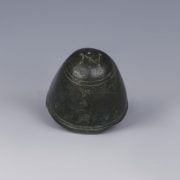Small glass weights were used in the Byzantine Empire, and later by the Arabs, to check the value of gold and silver coins, ensuring consistency and to prevent corruption. The obverse of glass weights may bear three main types of stamps: a block monogram, a cruciform monogram, or, as seen on this example, a consular bust with a surrounding legend.
The term eparch, from the Ancient Greek ἔπαρχος (eparchos), designates a Byzantine government official responsible for the administration of the Empire’s provinces. Among them, the Eparch of Constantinople was the most important, with his authority being second only to the Emperor. His jurisdiction was regulated by the Book of Eparch or Prefect (Τὸ ἐπαρχικὸν βιβλίον, to eparchikon biblion). Traditionally dated to the reign of Leo VI the Wise (AD 886-912), the book provides a list of regulations concerning the collegia or guild organisation system, representing an essential testimony of the economy of the Byzantine Empire.


